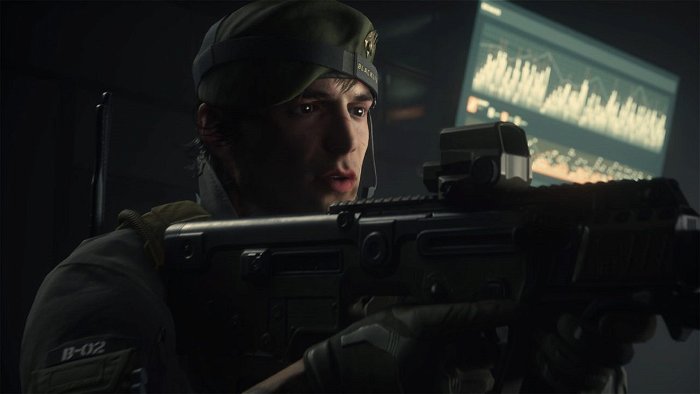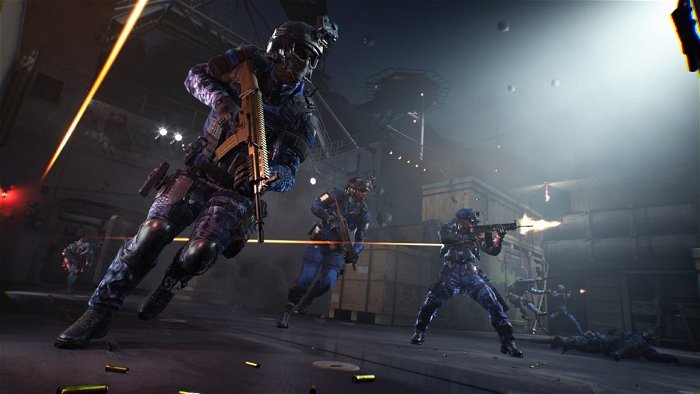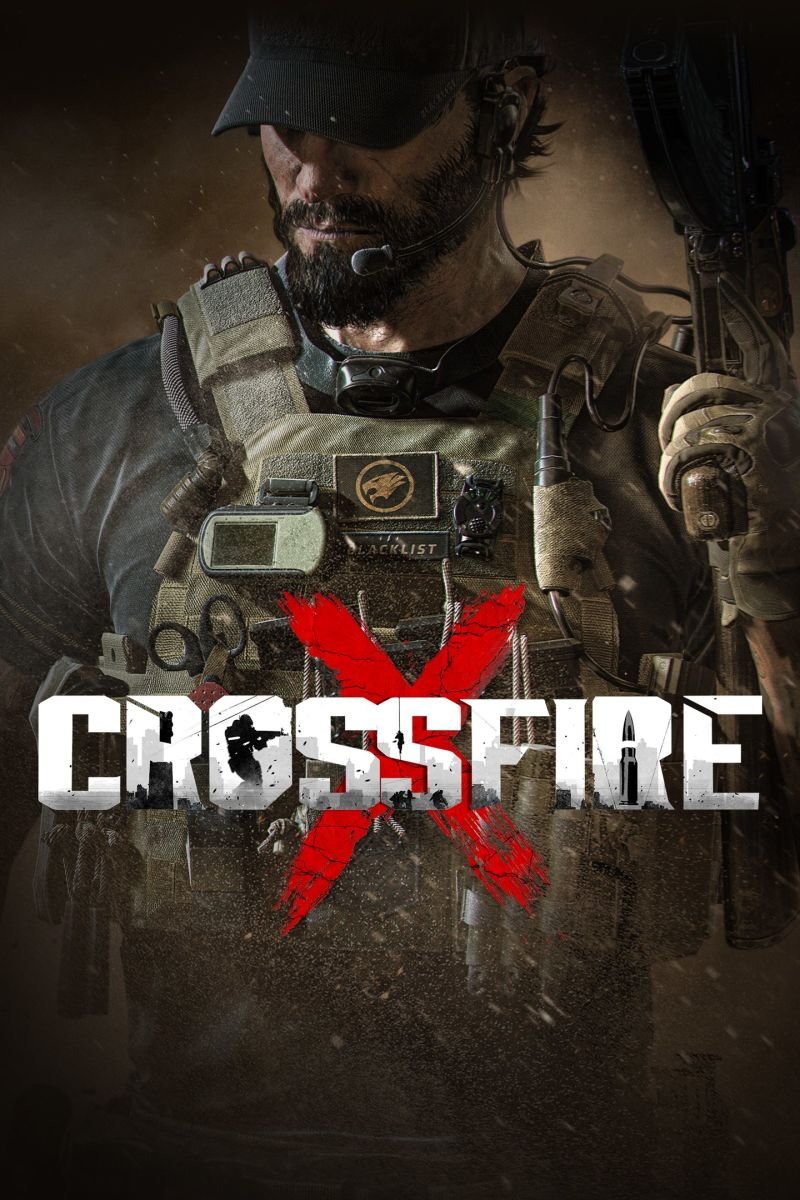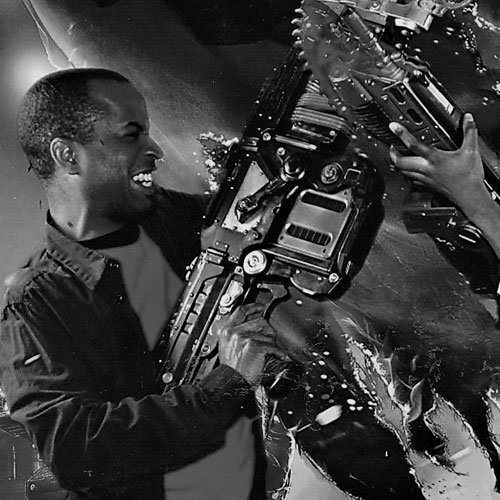What does the “X” in CrossfireX stand for? Is it meant to be a “cool-sounding” 1990’s-inspired acronym for “EXTREME?” Or perhaps it’s intended as a sort of Xbox-specific branding similar to how the word “Super” was applied to many Super Nintendo ports of multi-platform games back in that same era? CrossfireX is an Xbox Series X|S, Xbox One and Xbox Game Pass after all. There might also have been a desire on the part of South Korean publisher Smilegate to simultaneously differentiate this new game from its wildly popular 2007 tactical shooter, CrossFire (which to this day is still one of the world’s most played PC games by player count thanks to its success in Asian markets), as well as pre-emptively crown CrossfireX as its next-generation successor. Given the limited install base of Xbox units worldwide versus that of its console rivals and the significantly wider PC market, however, such a bold Xbox gambit on the part of Smilegate is highly unlikely, but you never know.
Well, I’m willing to bet that Smilegate wishes all the above were true, but the honest truth here is that CrossfireX is a game that doesn’t know what it is, and the experience of playing its campaign and multiplayer components is akin to witnessing the love child of two wayward parents dumped unceremoniously on the doorstep of an orphanage. It’s simply criminal what has occurred here and, based on the overall execution of this product, I cannot fathom why it even exists in the first place.

Let’s start with Remedy, whom let’s admit, as the developer behind some of the most visually stunning games of their respective generations (e.g., Alan Wake, Quantum Break, Control) as well as the pioneers of “bullet time” in video games thanks to Max Payne, is the real draw of this package. The story is that the Finnish developer was approached by Smilegate and Microsoft as far back as 2015 to develop a single-player campaign for CrossFire for Xbox that would help expose the CrossFire franchise to a wider audience outside of Asia.
Remedy, who at the time was becoming accustomed to having teams working on multiple projects at once, partnered up on the project, but rather than using Smilegate’s CrossFire engine, the studio instead chose to use its own Northlight Engine, which was previously used to power 2019’s Control as well as 2016’s Quantum Break, the last Xbox-exclusive game that Remedy would develop alongside Microsoft as a business partner. The fact that a completely separate game engine was used for the story campaign versus the multiplayer should be telling enough of what players can expect from this package as a whole, but we’ll get to that later.
Remedy’s contribution to the CrossfireX proceedings consists of two connected story campaigns called Operation: Catalyst and Operation: Spectre, in which players step into the steel-toed army boots of operatives from two warring military factions, Global Risk and Blacklist, respectively. Players can play either campaign in the order that they like, but it’s my recommendation that you play in the above order since Spectre immediately follows the events of Catalyst (including a post-credits scene that directly connects the two stories). Both stories are terrible by the way, and although players will be switching between different squadmates throughout both campaigns (more so in Catalyst), each campaign features its own main protagonist that players will quickly grow to dislike for different reasons.

Catalyst’s protagonist, Capt. Hall, is such an unreliable narrator that he even narrates what is going on in his mind when the player is controlling a different character and Hall himself is assumed to be unconscious or dead (wow, I wonder if he survived that explosion?). Meanwhile, Spectre’s Luis Torres’ transformation from civilian and petty thief to a fully-trained, ass-kicking, wingsuit-flying operative in mere days is beyond ludicrous, and that’s before having to swallow all the other boiler-plate “fight the future” sci-fi BS that the game as a whole tries to shoehorn into its approximately six hours of gameplay length.
While I have the upmost respect and admiration for Remedy Entertainment’s other past works, in the case of CrossfireX it is as if someone at the company took the plot of Quantum Break (an infinitely better-written game by the way), threw a generic Call of Duty skin on it and assigned their janitorial staff to pen the script. It’s literally THAT BAD. The worst part is, Remedy’s signature time-slowing gameplay feature (now clumsily called a “Combat Breaker” instead of bullet time) lacks any explanation in the game’s lore despite sitting next to all the other mad-scientist stuff that it does acknowledge, including clairvoyance and biological monsters floating in stasis tanks. The Combat Breaker is simply an unmentioned superpower that all the playable characters inexplicably have.
“The real shame here is that, from a graphical, audio and special effects standpoint, CrossfireX is the Quantum Break sequel we should have gotten…”
The real shame here is that, from a graphical, audio and special effects standpoint, CrossfireX is the Quantum Break sequel we should have gotten (had the original game been a first-person shooter, that is). From lighting and volumetric smoke effects to sparks, gunfire, and explosions, the Catalyst and Spectre campaigns are excellent showcases of what Remedy’s Northlight engine can do with a first-person shooter, and are especially impressive when a Combat Breaker is activated, allowing players to see their bullets rip apart enemies and objects in slow motion complete with detailed particle effects. The voices of enemy soldiers and even the soundtrack itself slows down during these moments, which can actually come off rather weird-sounding at times, but it’s certainly no deal breaker.

That said, the corresponding gameplay isn’t so great. Apart from a very enjoyable run-and-slide mechanic that I never seemed to tire of, I personally found the overall running and gunning rather stiff in terms of movement. Conversely, the default aiming and shooting sensitivity was ridiculously slippery by comparison (especially during mandatory sniping scenes), so I had to go into the settings and tweak sliders for a bit until I felt I had a setup I could work with. It also goes without saying that switching the graphics mode from Quality to Performance right from the get-go is a MUST if you intend to enjoy the game at all, otherwise gameplay will come off looking choppy and sluggish at 30fps (ray tracing be damned).
For a game that takes place in an alternate reality of 2022 and deals with the concept of near-invincible super-soldiers that can see the future, the selection of weaponry in CrossfireX’s campaign is pretty bog-standard stuff, even when compared with its closest Call of Duty and Battlefield equivalents, Call of Duty: Modern Warfare and Battlefield 4. A few of the weapons players will come across have some cool alt-fire and alt-aim modes and the act of reloading, aiming down sights and firing them is a thing of beauty (especially during Combat Breakers), but don’t expect much in terms of variety or weapon attachments. Also mitigating the fun are adversaries that function as irritating bullet sponges against just about any attack other than a headshot and come in only a handful of types.

Moving on to CrossfireX’s multiplayer suite, I’ll keep things mercifully brief. From the second players fire up the game, they’ll be greeted with an unstable and choppy main menu with a generic, bearded, machine-gun-toting avatar awaiting your game mode selection. The framerate in this menu alone is atrocious, easily below 15 frames per second and moving the cursor around is about as responsive as trying to stir a spoon in a jar of refrigerated peanut butter. Similarly, the objective-based multiplayer modes (which currently are just variations on the classic 2007 iteration’s Search and Destroy mode as well as a new Zone Control mode) are also under-performant. As in single-player, switching from Quality to Performance Mode will boost the framerate to 60 frames-per-second, but distant enemies still update at much less than half of that, and the improved framerate does next to nothing in terms of responsiveness.
As mentioned earlier, the multiplayer utilizes a completely different engine than Remedy’s Northlight, and if you told me that it was the original 2007 game running on an Xbox 360, I’d probably believe you. Maybe I would have applauded it too, as a PC port looking this bad running on a 360 would still have been quite an accomplishment two console generations ago. Sadly, this is a new, Xbox One-exclusive version of CrossFire seemingly built to run from the ground up on Xbox One and Xbox Series hardware, and as such the multiplayer falls so far below the mark that it isn’t even worth sticking around for the inevitable Games-As-Service trappings.

There’s no point in sugar-coating this: CrossfireX is a slapped-together, Frankenstein’s Monster of a game that can’t seem to decide what flavour of first-person-shooter it is. The Call of Duty-style run n’ gun controls and modern visuals of the campaign are disastrously at odds with its circa-2010’s Counter-Strike: Global Offensive–inspired multiplayer and it’s unlikely that fans of either half are going to enjoy the other. The separation between the modes is so distinct in fact that once you’ve started up either single-player campaign story there is no way to back out to the main menu to access multiplayer or the other campaign without quitting and restarting the app entirely!
Even the game’s inclusion in Xbox Game Pass can’t save this dumpster fire, as players who wish to play Operation Spectre will still need to shell out $14 CAD for the second chapter on top of their Game Pass subscription, which I’d be hard-pressed to say is a bargain for a three-hour second half to a first-person campaign “experiment”. I’m sure that when Remedy and Smilegate set out together on this collab, their intentions were in the right place and their business reasons were sound. As to why the result still ended up being such a disjointed mess after five long years of development is truly anyone’s guess.





